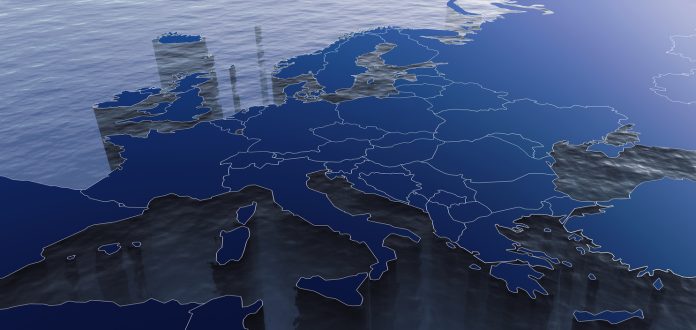Charlina Vitcheva, Director-General at the European Commission’s Directorate-General for Maritime Affairs and Fisheries (DG MARE), leads us through the European Ocean Pact policy, which unlocks a resilient and prosperous future
As the global community gathered at the Third United Nations Ocean Conference in Nice, the European Union (EU) unveiled the European Ocean Pact, a transformative blueprint to safeguard the long-term health of our ocean while bolstering Europe’s resilience, food sovereignty, security, energy security, and competitiveness. In a world where the ocean covers 70% of the Earth’s surface and is home to 80% of its biodiversity, the resilience of our seas is intrinsically connected and indivisible from humanity’s prosperity.
The relevance of the ocean cannot be overstated. It regulates our climate, produces half of the planet’s oxygen, and is critical to our economies, carrying 99% of global internet traffic through underwater cables and 80% of global trade. For the EU, the steward of the world’s largest maritime territory, with every fifth European living on the coast, this means harnessing a blue economy that employs 5 million citizens and generates over €250 billion annually.
The Ocean Pact’s multifaceted approach
The European Ocean Pact stands as a testament to the EU’s dedication to preserving marine environments while maintaining economic competitiveness. Enshrined in the Commission President’s political guidelines for the current mandate, the Pact serves as a blueprint for achieving sustainable ocean management through its six strategic priorities.
Ocean health
The ocean is a vital carbon sink, absorbing a significant portion of carbon emissions and thus playing a crucial role in climate mitigation. The Pact prioritises restoring marine ecosystems to enhance their carbon capture capabilities. Through concrete actions – including the establishment of European blue carbon reserves and implementing binding source-to-sea pollution controls – we will protect marine health for future generations. For that, the EU will encourage Member States to establish and manage marine protected areas and will revise the Maritime Strategy Framework Directive.
A competitive and sustainable blue economy
The forthcoming Industrial Maritime Strategy will boost competitiveness across shipping, tourism and offshore energy, while the evaluation of the Common Fisheries Policy regulation will ensure that we address all pillars of sustainability – economic, social and environmental.
By 2026, we will project our long-term (2040) vision for fisheries and aquaculture, complemented by a Blue Generational Renewal Strategy to attract young talent to ocean industries because the future of Europe’s maritime sector hinges on both secure infrastructure and thriving coastal livelihoods.
Europe’s ports and fisheries form the backbone of our maritime sovereignty. The new EU Ports Strategy, building on the European Ports Alliance, will transform our harbours into secure hubs to tackle organised crime and illicit trafficking, safeguarding critical trade routes supporting the single market.
Simultaneously, the Pact will ensure our food sovereignty by future-proofing fisheries and aquaculture: we are modernising European fleets through the Energy Transition Partnership, decarbonising operations, and shielding fishers from different challenges, from invasive species to unfair competition.
Security and defence
In the face of a fractured geopolitical landscape marked by growing tensions, maritime security is non-negotiable. The Pact proposes a stronger EU coast guard cooperation and maritime border security, emphasising technological advancements like an unmanned drone fleet to monitor and protect critical infrastructures such as underwater cables and offshore wind farms. In partnership with the Nordic Member States and close allies, the EU aims to fortify its operational capacities in the Baltic and North Sea regions, acknowledging its environmental and security significance.
Ocean observation
Expanding the EU’s global leadership in ocean science and technology by 2035 stands as a cornerstone of the Pact. Through the ambitious EU Ocean Observation Initiative, we will achieve autonomous management of critical ocean infrastructure with the support of the Ocean Research and Innovation strategy – the scientific backbone feeding our European Digital Twin of the Ocean. To safeguard this legacy, we will establish an EU Ocean Youth Ambassador Network, championing ocean sustainability across Member States and beyond.
Coastal communities
Recognising coastal communities as vital to the blue economy, the Pact dedicates strategies to enhance their resilience and sustainability. The importance of these communities in food supply and renewable energy is underscored, ensuring that they continue to drive Europe’s blue economy forward.
International ocean governance
The ocean knows no boundaries, making their protection a test of global solidarity. The Pact prioritises reinforcing Europe’s diplomatic leadership to combat illegal fishing, plastic pollution, and biodiversity loss. Through concrete actions – including mandatory digital catch certification (IT CATCH) entering into force January 2026, to help combat IUU fishing, securing three vast marine protected areas in the Southern Ocean, and championing an ambitious Global Plastics Treaty – we advance international governance. To achieve this, the EU is mobilising Member States and third countries to ratify the High Seas Treaty while leveraging its diplomatic networks to accelerate global implementation.
A unified strategy for sustainability and growth
The European Ocean Pact weaves together diverse policy threads into a single strategy – slashing bureaucratic barriers and empowering Member States to act decisively against overfishing, pollution, and climate threats. To anchor this ambition, the Commission will present a pioneering Ocean Act by 2027. This landmark legislation will establish a single, legally binding framework to accelerate the Pact’s implementation while cutting red tape.
Building on a revised Maritime Spatial Planning Directive that enhances cross-sectoral coordination and sea-basin management, the Act will harmonise fragmented policies into one coherent force for ocean resilience. A high-level Ocean Board, uniting voices from fisheries, energy, science and coastal communities, will steer this transformation. And with the launch of an EU Ocean Pact dashboard, every citizen will track our progress transparently as we turn pledges into lasting protection.











